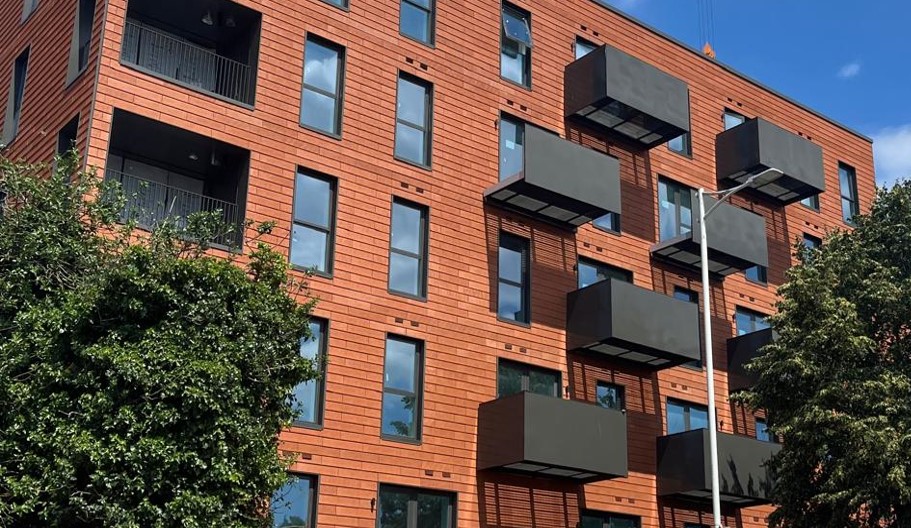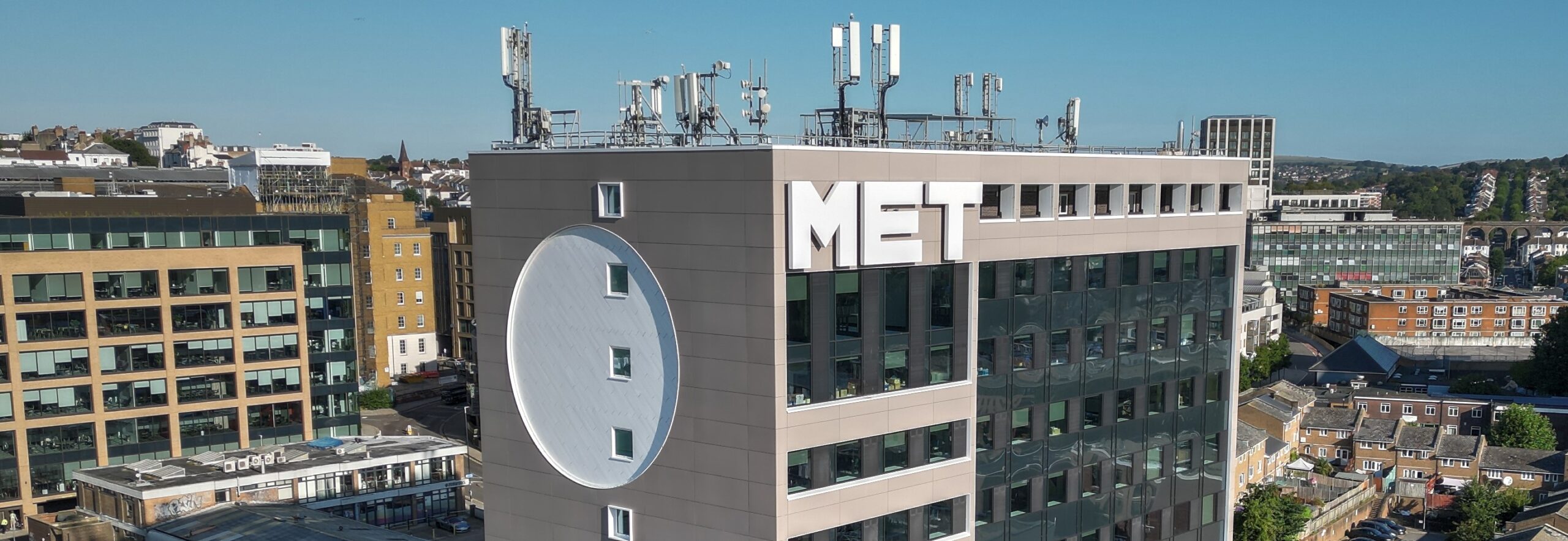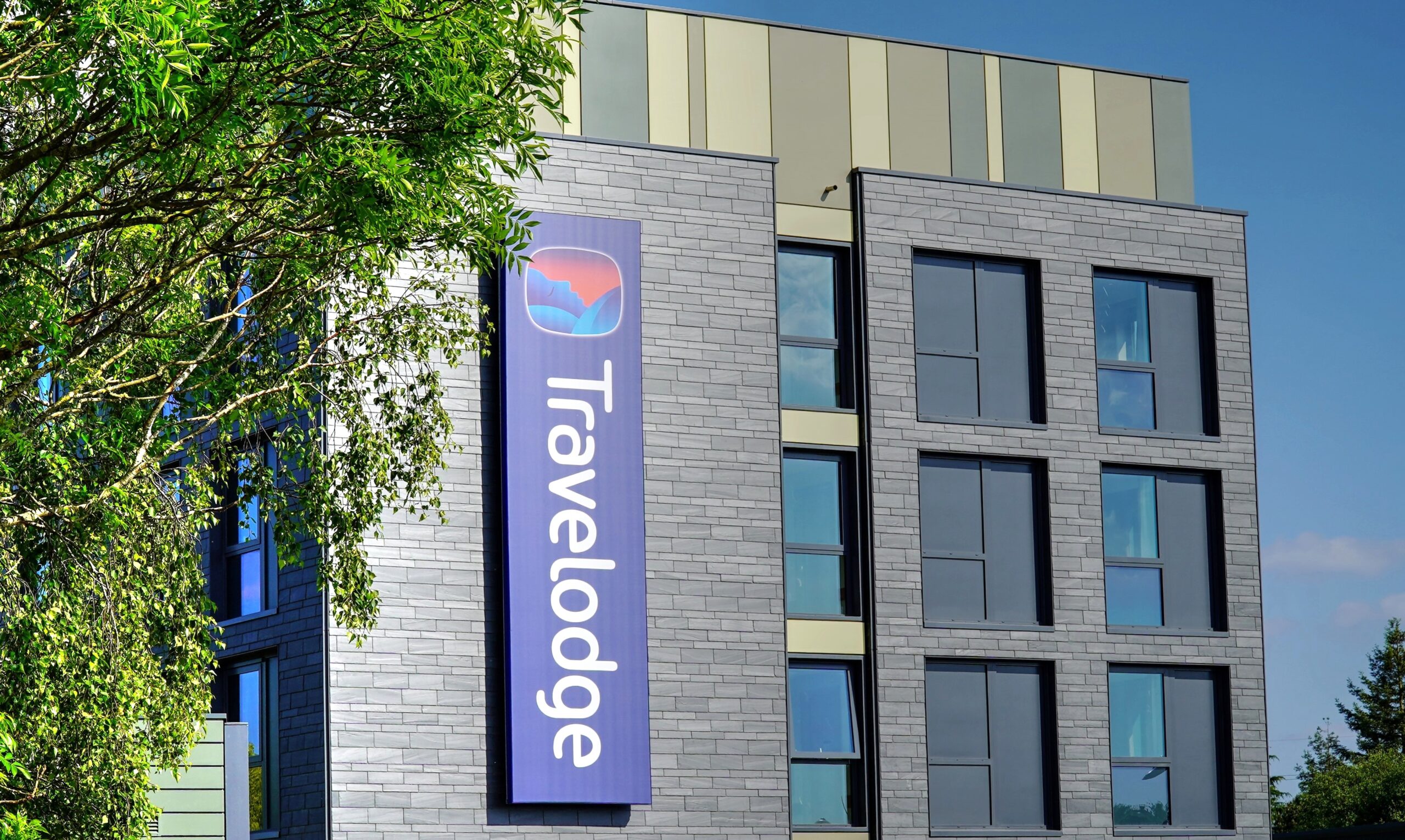Case Study
Crawley Civic Office
“The architectural approach to the new Town Hall, its façades and use of materials follows the spirit and architectural lineage of the early modernist buildings that define Crawley’s New Town character” – Masterplanner & Architect, Cartwright Pickard.
The new 9-storey building includes a new Civic Chamber, with 5 floors of flexible commercial office space above. Crawley Civic Office is part of a masterplan and regeneration strategy which will transform Crawley Town Centre and includes a new public square, 182 new homes and a district energy centre. Find out more.
GRC is used to express the structural frame, against the Mechslip brick infill panels. The façades were designed with a collaborative REVIT model (see carousel below), uploaded weekly for clash detection, enabling coordination of SFS, pre-tensioned slab, fire compartmentation, product selection, detail coordination with the glazing contractor, GRC details and scheduling of material to finished lengths, reducing site cuts.
The ratio of glazing to brick slip infill in the façade has been designed at 45% for occupant comfort and wellbeing, optimising daylight and views out while avoiding overheating and glare in summer and excessive heat loss in winter. The low-energy building has a target BREEAM rating of ‘Excellent’ to achieve large savings on the Council’s running costs going forward. A2O’s thermal analysis enabled optimal insulation and U-values around complex construction detailing.
KIER REGIONAL SOUTHERN

Challenges
The design involved a pre-tensioned slab, fire barrier and insulation issues and very tight tolerances at the interface with the glazing.
The design called for a pre-tensioned concrete slab for which data on the loadings of the cladding components was required at an early stage, and which contained pre-tension bars within the slab.
The ribs behind the GRC had to be aligned in specific places to work with the fire barrier design.
There were design issues regarding reduced insulation to some areas due to clashes with GRC.
The design called for the cladding to be installed on top of glazing frame, giving very tight tolerances between the GRC and the windows.
Solutions
A collaborative Revit model, uploaded weekly, enabled the design team to detail resolutions of all the complex interfaces, fire and thermal issues.
Through early engagement with the main contractor the loading data was supplied up front. A2O designed special fixings for the cladding systems to the slab to avoid the pre-tension bars.
A2O worked with fire barrier supplier, Tenmat, and the fire engineer to detail all the interfaces.
A2O created a 3D thermal model with weighted U-values to input extra insulation in reduced areas.
Additional QA on site ensured a consistent shadow gap between the GRC cladding and the glazing system by others.
Fact File
Sector
- Offices - Public Sector
STATUS
- New Build
Value
- £3,150,000
Scope of Work
- SFS & CP Board
- GRC horizontal & vertical feature bands to express structural frame
- Brick Slips - Mechslip
- PPC Aluminium projecting fins - bespoke design by A2O, fabricated by a partner
- Fire Barriers & Insulation
Design
- Full Design Service



